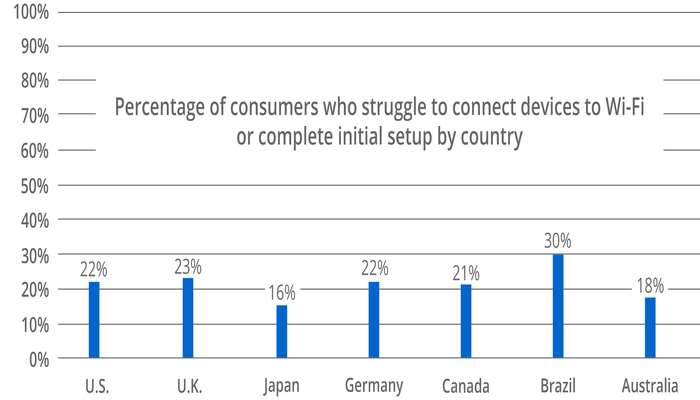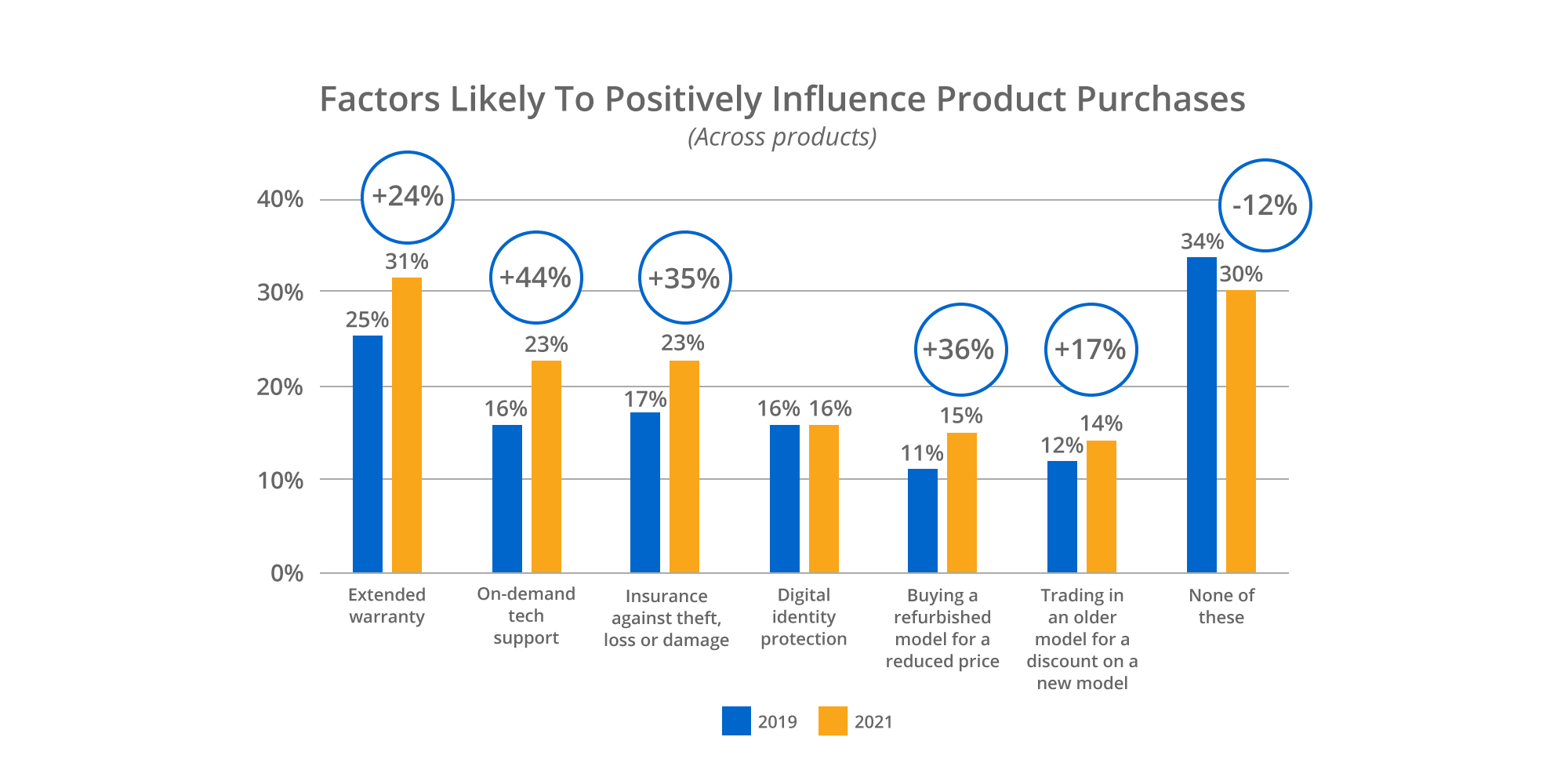Consumer interest in connected technology, also known as IoT (Internet of Things), is at an all-time high, thanks to the work- and school-at-home trends that have been accelerated by the COVID-19 pandemic. For connected product and service companies such as mobile carriers, OEMs, and retail connected-living companies, the market is rife with opportunity. One such opportunity — a somewhat counterintuitive one — stems not from consumer enthusiasm, but from consumer frustration.
The Good News: Use of Connected Tech is at an All-Time High
With many people working from home for the first time, helping kids learn from home and using more streaming and video conferencing services than ever before, consumer use of connected products in the U.S. increased by 50 percent from 2019 to 2021, according to Assurant’s latest Connected Decade survey. Connected product usage is also up in the U.K. (41 percent), Japan (28 percent), Germany (31 percent), Canada (38 percent), Brazil (64 percent) and Australia (33 percent). The result is that more consumers than ever before have established connected homes where smart products such as security systems, appliances, entertainment systems, and home-office printers are controlled from their mobile devices.
Once consumers purchase a connected product, they are increasingly interested in upgrading to a newer model when available. In 2021, 39 percent of U.S. consumers said they will definitely buy a newer model of their connected devices when the next version is released, a 26 percent increase from 2019. Not surprisingly, younger generations lead the pack when it comes to the prospect of upgrading. Millennials (79 percent) and Gen X-ers (77 percent) are somewhat or very likely to buy a newer model of their connected products when the next version is released.
Usage is up, and so is positive opinion. For the first time since Assurant started researching connected consumer behaviors six years ago, consumer outlook on technology is positive across all generations in nearly every country — likely because technology has been the primary source for many of us to connect to friends and family during the pandemic.
These trends have pushed smart technology adoption to an inflection point. The response from connected product and service providers will determine if the adoption trend continues growing or hits a plateau as consumers around the world begin to reengage in face-to-face interactions.
The Bad News: Technology Adoption Continues to Present Difficulties

While usage of smart technologies is up, the rise occurred with some pain on the part of consumers. In 2021, 46 percent of U.S. consumers said they encountered challenges with their connected products — a 35 percent increase from 2019. The most common frustrations U.S. consumers faced were connecting phones or other smart devices to Wi-Fi (22 percent) and insufficient troubleshooting self-help (18 percent). Establishing Internet connectivity across smart products was a consistent trouble for consumers in other parts of the world as well.
Percentage of consumers who struggle to connect devices to Wi-Fi or complete initial setup by country
| U.S. | U.K. | Japan | Germany | Canada | Brazil | Australia |
| 22% | 23% | 16% | 22% | 21% | 30% | 18% |
While the establishment of Wi-Fi connectivity leads the pack of problems, there are other difficulties. Consumers commonly name the following as points of stress:
- Broken or malfunctioning hardware
- Software glitches or crashes
- Confusion about how to operate connected products
Factors Influencing Product Purchases
Consumer desire to have these problems resolved quickly and conveniently is reflected in the increased interest in on-demand technical support between 2019 and 2021. Assurant’s survey showed a 44 percent jump in peoples’ desire to get expert guidance with installing, connecting, and using connected purchases.
Consumers also expressed increased concern about theft, loss, and damage to their devices, with an increase in interest of 35 percent. The chart shows factors most likely to positively impact a purchase decision.

A Market Opportunity
The adoption of connected technology is at a historic high. Consumer perceptions of the technology are positive. These factors create an eager, attentive market. Alert players will support these consumers and reap benefits in current purchases and future loyalty.
SUMMARY:
- More consumers than ever before have established connected homes where smart products are front and center. Once consumers purchase a connected product, they are increasingly interested in upgrading to a newer model when available.
- Consumers hit roadblocks when confused about how devices work. Optimize your customer experience by helping buyers get value from their purchase from Day One. Provide consumers easy access to personal guidance on how to install, connect, use, and troubleshoot their connected product. This has proven to produce high net promoter scores (NPS), turning customers into advocates who actively refer others.
- According to a recent Assurant survey, there was a 35 percent increase in consumers concerned about theft, loss, or damage to products. Provide the right protection products and services to give them peace of mind. New market segments and increased market penetration are waiting for providers who offer the help customers want.
Jeff Unterreiner is the President of US Connected Living at Assurantations at Assurant.

Jeff is the President, U.S. Connected Living, at Assurant, a global provider of risk management products and services with headquarters in New York City. Its businesses provide a diverse set of specialty niche-market insurance products in the property, casualty, extended service protection and pre-need insurance sectors.















